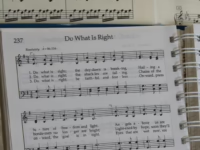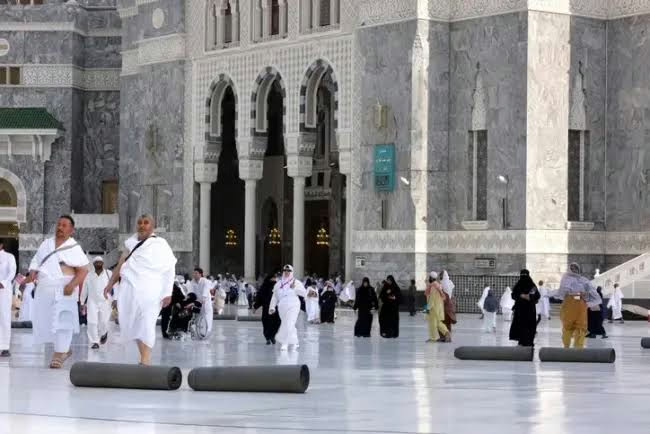Evening Reflections: The Mawlid Gathering as a Living Tradition
As twilight descends between Maghrib and dusk, a historic city square transforms into a vibrant stage of remembrance. A gleaming brass crescent atop a mosque gate catches the fading light, while a diverse crowd assembles-elders, students, and families with children perched on shoulders. The air fills with the gentle rhythm of a nasheed, weaving a steady heartbeat of devotion. This gathering marks the Mawlid, the commemoration of Prophet Muhammad’s (peace be upon him) birth, a moment to honor his exemplary life and to engage with a centuries-old tradition of remembrance.
Across different cultures and eras, Mawlid has sparked varied interpretations: Is it a commendable act of worship, a permissible cultural expression, or an innovation to be avoided? Does it illuminate the path of devotion or risk straying into unwarranted novelty? Most importantly, how can this observance align most closely with the Prophet’s own example as preserved in the Sunnah?
Remembrance as Education and Community Building
For many Muslims worldwide, Mawlid is far more than a festive occasion; it serves as a dynamic educational experience that brings the Prophet’s life vividly into the present. This approach emphasizes the fusion of memory, learning, and communal solidarity as pillars sustaining faith.
Expressions of Devotion and Ethical Reflection
Supporters view Mawlid as a heartfelt public demonstration of love and gratitude toward the Prophet. This is not mere spectacle but a conscious practice rooted in taqwa (God-consciousness) and ethical commitment. The celebration acts as a reflective mirror, highlighting virtues such as humility, compassion, courage, and patience, inspiring the community to embody these qualities in daily life.
Interactive Learning and Shared Spirituality
The Mawlid gathering functions as a mobile classroom where scholars and reciters narrate the seerah (Prophetic biography), interweaving hadiths into accessible stories. Through poetry, nasheeds, and lectures, public spaces transform into collective study halls, fostering reverence and shared spiritual growth among participants of all ages.
Historical Roots and Regional Variations
Advocates highlight a rich historical tapestry where Mawlid celebrations were embraced or tolerated, especially in regions where local scholars emphasized praising the Prophet and recalling his character. They argue that uniformity across time and geography is neither feasible nor necessary; instead, regional customs shape the observance, provided the focus remains on remembrance, prayer, and education rather than extravagance.
Reconsidering Bid’ah Through Intent and Practice
The theological argument centers on intention and adherence to Qur’anic principles. When Mawlid observances emphasize praise, supplication, and knowledge within the Prophet’s spirit, they can be deemed permissible or even praiseworthy acts of worship. The label of bid’ah (innovation) should not be indiscriminately applied to new practices that nurture piety and community cohesion.
Proponents advocate for moderation, doctrinal clarity, and avoidance of practices bordering on shirk (associating partners with God) or ostentation. The goal is to align intention with action-cultivating devotion that purifies the heart and sharpens conscience.
Upholding Early Islamic Traditions: The Case Against Public Mawlid
A significant group of scholars opposes public Mawlid celebrations, emphasizing strict adherence to the earliest Islamic generations and the Prophet’s established Sunnah. Their stance is not a rejection of devotion but a commitment to preserving the purity of religious practice.
Lack of Explicit Prophetic Endorsement
Critics point out the absence of a direct, universal command from the Prophet to observe Mawlid as a religious duty or ritual. They argue that without clear textual evidence, elevating Mawlid to a mandatory practice risks compromising the precision of Islamic obligations.
Salafist Model of Devotion
Drawing on the example of the Salaf-the pious predecessors-opponents note that formal Mawlid ceremonies were not part of early Islamic worship. This absence is interpreted as an indication that such celebrations fall outside the Prophet’s authentic practice and the consensus of early scholars.
Concerns Over Cultural Imitation
There is apprehension that public Mawlid festivities, with parades and seasonal customs, may mimic non-Islamic celebrations like Christmas, potentially blurring doctrinal boundaries. The concern is not about honoring the Prophet but about preserving the distinctiveness of Islamic worship.
Risks of Excess and Distraction
Critics warn that Mawlid can devolve into social events focused on fundraising, feasting, or spectacle, overshadowing genuine worship and study. Such commercialization and emphasis on visibility may detract from spiritual depth.
Within this perspective, some scholars allow private remembrance and spiritual reflection but reject public ceremonies. Others permit Mawlid only under strict conditions-modest gatherings, avoidance of extravagance, and prioritization of education and worship over display. The shared priority is fidelity to a clearly defined religious practice rooted in early Islamic tradition.
Balancing Tradition and Innovation: A Middle Path
Between outright acceptance and rejection lies a nuanced approach gaining traction in contemporary discourse. This middle ground seeks to honor the Prophet with reverence while maintaining fidelity to foundational texts and principles.
Conditional Permissibility and Scholarly Guidance
This view holds that Mawlid may be allowed if grounded in authentic sources and scholarly consensus. The focus is on sincere intention (niyyah) and forms that emphasize praise, reflection on the Prophet’s character, and instruction in his teachings. Practices involving bid’ah, shirk, or excess are firmly rejected.
Prioritizing Virtue Over Pageantry
The middle path emphasizes cultivating the Prophet’s virtues-mercy, justice, patience-through educational lectures, communal prayers, and ethical exhortations. It discourages ostentatious displays or politicization of the event, aiming instead for spiritual enrichment.
Respecting Local Traditions Within Islamic Framework
Islam’s history reflects cultural adaptation within the bounds of tawhid (monotheism). In regions where Mawlid has longstanding roots and is observed with respect for Islamic law, it may be culturally legitimate. Conversely, in areas without such precedent or where competing customs exist, caution and discernment guide practice.
Aligning with the Prophet’s Sunnah: Principles Over Rituals
One of the most frequently asked questions is which approach to Mawlid best reflects the Prophet’s Sunnah. The answer lies not in a single ritual but in a set of guiding principles.
Foundation in Primary Texts
Every act of devotion must be rooted in the Qur’an and authentic Sunnah. Practices conflicting with these sources cannot claim closeness to the Prophet’s example.
Rejecting Innovations in Form and Intent
Any addition of beliefs, rituals, or forms not grounded in established tradition, or resembling non-Islamic religious customs, risks deviating from the Prophet’s path.
Substance Over Ceremony
A humble, sincere remembrance focused on the Prophet’s character and teachings can be more faithful than elaborate public ceremonies lacking spiritual depth.
Emphasizing Taqwa, Knowledge, and Social Welfare
Actions that promote moral integrity, deepen Islamic understanding, and support the vulnerable align closely with the Prophet’s mission and ethos.
Many scholars advocate for Mawlid observances that remain within the framework of worship and learning, fostering compassion, social responsibility, and ethical devotion. Conversely, celebrations that prioritize spectacle or social prestige risk straying from the Prophet’s example.
Scholarship, Tradition, and Contemporary Realities
The ongoing discourse on Mawlid exemplifies Islam’s rich and diverse scholarly heritage. It draws upon the Qur’an, Hadith, the consensus of the four major schools of Islamic law, and centuries of jurisprudential debate. Modern voices reflect the complexities of pluralism, diaspora experiences, and the quest for spiritual nourishment that respects doctrinal integrity.
This dialogue is not monolithic but a symphony of perspectives inviting mutual respect and thoughtful discernment. Ultimately, the question is not merely about textual presence but about how communities embody the Prophet’s example through humility, mercy, justice, and the pursuit of knowledge.
When Mawlid gatherings embody these values-devotional reverence, learning, charity, and unity under Allah’s sovereignty-they offer a powerful message of grace in a fragmented world. Conversely, when overshadowed by excess or vanity, they risk misdirecting devotion.
Final Reflections: Mawlid as a Testament to Faith and Humility
The debate surrounding Mawlid ultimately tests how Muslim communities balance memory, authority, and the desire for closeness to Allah. It challenges believers to honor the Prophet with reverence while maintaining humility about human limitations.
This ongoing story of continuity and renewal invites Muslims to embody the virtues exemplified by the Prophet: mercy, justice, generosity, patience, and unwavering worship of the One God.
Faithful adherence to the Sunnah is less about ritualistic formality and more about a disciplined commitment to worship, knowledge, and ethical action. When Mawlid serves as a channel for such discipline-marked by clear intention, modesty, and rootedness in authentic sources-it becomes a meaningful expression of devotion. The true challenge lies not in policing the heart’s love but in safeguarding its sincerity and integrity, ensuring the Prophet’s legacy remains vibrant and true to the divine message.























0 Comments